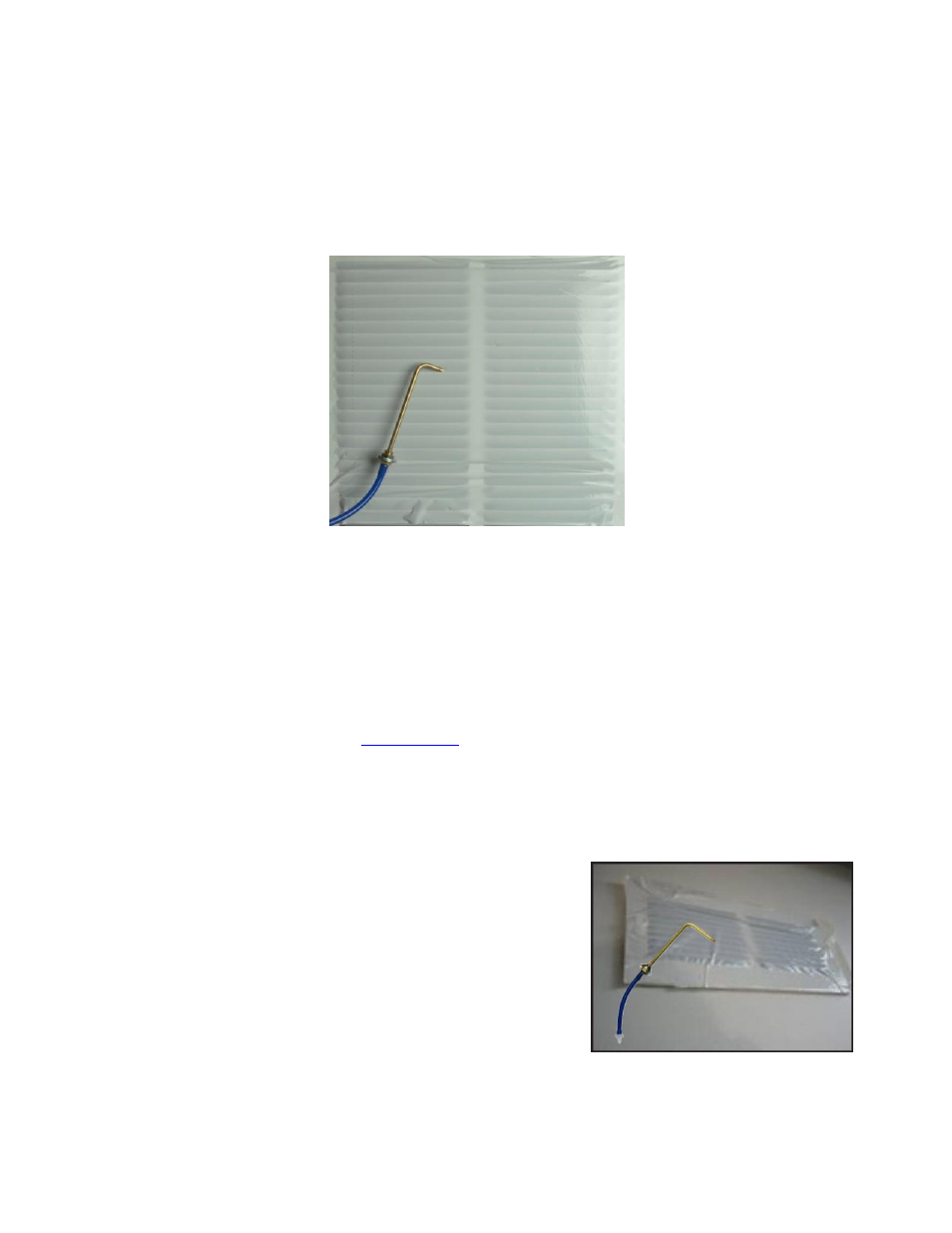Retrotec DucTester 341 User Manual
Page 27

Page 27 of 83
©Retrotec Inc. 2014
Speed Control Knob, disconnect the yellow Speed Control Cable and turn the knob on, off
and on again.
4. Connect the yellow and green tubes on the fan.
5. Insert the blue tube into the duct system, typically through a supply register closest to the
air handler or into the supply plenum itself. Attaching a Static Pressure Probe to the blue
tube is mandatory when connecting to the plenum to avoid the effects of the moving air
(velocities) to be found there. While not necessary when connecting to registers since there
is almost no velocity there, it makes a handy method to pierce the tape and hold the blue
tube in place.
Figure 16: Insert the blue tube into a supply register closest to the air handler
6. If the rechargeable batteries in the DM32 are below one quarter power, the battery charger
should be connected to the micro-USB port on the DM32. Charge them fully overnight.
7. To test control of the fan, press
[Set Speed] [20] [Set]
on the DM32. This sets the fan to
20% speed. The preferred method is using
[Set Pressure] [25] [Enter]
.
(Some standards
require 50 Pa).
8. Press
[Stop]
to stop the fan.
For details on DM32 operation, see
6.6
Blue Tube location matters when testing leaky ducts
When measuring extremely leaky duct systems (where the leakage
is over 500 CFM), the location of the test measurement point has a
significant influence on the measured results because the test
pressure induced in the duct system will vary throughout the
system.
The highest leakage results will likely be measured when the blue
tube is put into the supply register that is furthest from the air
handler. Conversely, putting the blue tube into the main supply
trunk line, or supply plenum, will measure lower leakage results.
Measuring with the blue tube at the return ducting, where the
DucTester is normally attached, will show the lowest possible
leakage results.
Figure 17: A Static Pressure Probe attached
to a pressure tube allows the measurement
of pressure without flow interference (e.g.:
inside a supply register)
